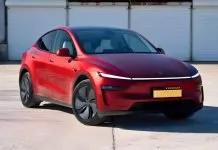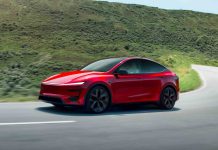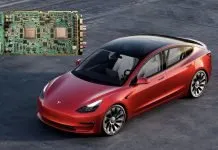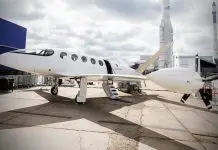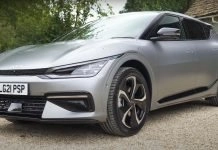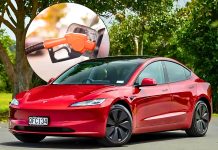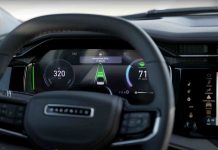In the past, we have seen several reports of Tesla vehicles saving lives thanks to its advanced Autopilot system. Now, another incident in New Mexico has highlighted the proven life-saving capabilities of Tesla’s advanced driver assistance system. A Tesla driver was almost in a head-on collision, but FSD saved his life. The driver, who goes by the name of @Clifford98506 on X (previously Twitter), posted his appalling experience that happened after attending the Tesla Shareholders’ Meeting and driving through New Mexico.
His post tells how a car abruptly shifted to his lane at 75 mph, where a head-on collision would have been a possible deadly accident. But the autonomous driving system in the Tesla responded immediately and turned the car out of danger. The outcome was only some minor damages, a shattered mirror, a broken window, but a thankful driver.
He posted “FSD saves lives. It happened to me tonight. Just a broken mirror, busted window, and a bit of a shaken mind. Thank you, Elon, thank you, Tesla, thank you, Cybertruck,”
The Role of FSD (Supervised) in Real-World Safety
Tesla cars have a set of complex sensors, cameras, and radar, which enable vehicles to feed back into the environment and make decisions in moments. And in the given instance, the Autopilot or Full Self-Driving (FSD) technology seems to have detected the abnormal object and performed a rapid maneuver, preventing the crash.
FSD saves lives. It happened to me tonight.
Going through New Mexico from the Tesla Shareholders' meeting, the head-on collision (75 mph) with oncoming traffic was averted. Just a broken mirror, busted window, and a bit of a shaken mind. Thank you Elon, thank you Tesla, thank… pic.twitter.com/h4uT0KPoL1— Clifford (@Clifford98506) November 10, 2025
Although human drivers usually depend on their reaction speed and intuition, autonomous systems are not limited to 360-degree watching, which enables them to respond to danger faster than a regular person. In this case, the system’s ability to detect and respond to oncoming vehicles in milliseconds made the difference between a close call and a disaster. The cameras, neural networks, and real-time decision algorithms embedded in the FSD mean that the device can detect the presence of hazards at a speed that is normally beyond the capability of human reflexes.
Tesla has an AI vision that enables it to learn millions of miles driven by its worldwide fleet. All of these accidents avoided, such as this one, contribute to that growing body of information and make the system safer and more responsive to all users.
Growing Evidence of FSD’s Safety Record
It is not the first time that Tesla cars have been said to save an accident due to autonomous technology. Several drivers have given similar testimonies over the last year that FSD avoided collisions, avoided road debris, or braked to avoid collisions caused by distracted or aggressive human drivers.
According to recent internal data published by Tesla, cars using FSD (Supervised) have resulted in up to 85% lower crash per mile than human-operated cars. The company boasts that with each software update, the system will become more intelligent and will use feedback from real-life incidents in order to update the driving logic.
The most recent releases of FSD, particularly v12 and later, rely on end-to-end neural networks that mimic the driving behaviour of humans, only with higher reaction times and no distractions.


